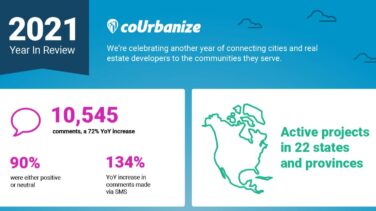
With the holiday shopping season upon us, we thought it was a good time to share our perspective on one of the pillars of American retail consumerism: the mall.
The mall holds mixed feelings of nostalgia for those of us who grew up in suburban USA, incorporating the anticipation we felt as youngsters lining up for photos with the Mall Santa or Mall Easter Bunny to the independence we felt as teenagers killing time after school and purchasing Auntie Anne’s pretzels from the food court.
But the landscape of consumer behavior has and will continue to change. Malls are not the epicenter for convenient purchases that they once were, and a visit to one of them is often viewed as a chore. Buying habits, already trending more towards online shopping even before the surge of COVID-19 forced so many of us to shop from home, are shifting. The question that many of us have asked ourselves is: are malls going extinct?
This helpful article from NRF provides an overview of the state of retail as a whole. One of the key takeaways, relevant to speculation over the fate of malls, is that in-store purchases still accounted for 80% of all retail sales in 2020. Even as online sales have ramped up by 70% over the past three years, people are still largely purchasing from brick-and-mortar stores.
This same article also suggests that there is a halo effect in play for retailers who offer multiple purchase channels for their consumers. Nine of the ten top ecommerce websites are run by retailers that also operate a brick-and-mortar store, which makes sense. Consumers like options, and they like the ability to balance the convenience of online shopping against the experience of visiting a physical space to roam a store and garner ideas.
Viewed through this data, we don’t think malls are going anywhere for a while. We do, however, think that in order for them to remain relevant and competitive, they’ll need to adapt.
Today’s consumer has multiple options to get what they need at the stroke of a keyboard. To get him/her out the door and to a mall, there needs to be the promise of an enjoyable experience and something beyond shopping and chain restaurants.
This article highlights the type of project that we think more developers should be considering when tackling a renovated (or brand new) mall space. Rather than centering around a place for people to wander, shop, and maybe grab a quick bite, the pillar piece of construction in this new development is a brand new medical campus. Surrounding it will be a walkable urban village that will include multi-family residential units, retail, entertainment spaces, dining, and more.
This is just one example, but supports our perspective on what we think the mall of the future will look like: far more diversified than what many of us grew up with, inclusive of office spaces, residential options, healthcare facilities, and in many cases appealing outdoor spaces.
Most consumers don’t need one catch-all to buy everything they need, from a retail perspective. Offering ways to enhance the mall experience to draw people in – and keep them there – is something that developers should strongly keep in mind as malls outgrow their life cycle as places to kill time and evolve into places where people actually want to spend time.


